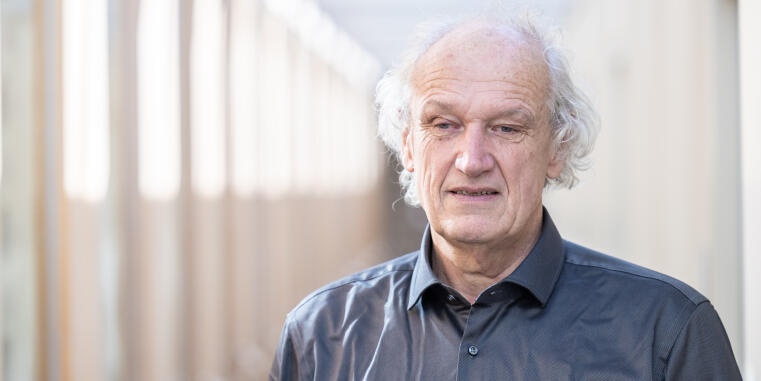

CV
Prof. Dr. Siegfried Saerberg held the Chair of Disability Studies at the Evangelische Hochschule für Soziale Arbeit und Diakonie (Protestant University of Applied Sciences for Social Work and Diaconia), Rauhes Haus, in Hamburg from February 2020 to September 2025. There he led the “Schattenbericht Hamburg” (Shadow Report Hamburg) project, an evaluation of the state action plan for the implementation of the UN Convention on the Rights of Persons with Disabilities.
Saerberg studied sociology, philosophy and political science in Cologne. His master’s thesis, supervised by Friedhelm Neidhardt, was published in 1991 by Böhlau-Verlag under the title “Blinde auf Reisen” (Blind People Travelling). He then researched and taught at the University of Konstanz under Thomas Luckmann, at the Technical University (TU) of Dortmund under Ronald Hitzler, and at the Protestant University of Applied Sciences in Bochum under Theresia Degener. He received his doctorate from TU Dortmund with a lifeworld ethnography of blind spatial orientation, which was published in 2006 under the title “Geradeaus ist einfach immer geradeaus” (Straight ahead is always straight ahead) by the University of Konstanz Press.
His research focuses on disability studies, participation and inclusion research, disability arts, sensory ethnography, and digitality and disability. Since 2017, he has been a member of the board of the Disability Studies in Deutschland e. V. association.
As an artist, Saerberg worked with Terry Fox at “sonambiente Berlin 2006”, among others. For many years, he was a member of the jury for the War Blind Radio Play Award. In 2013, he curated the exhibition “Art Blind” for the association “Blinde und Kunst” (Blind People and Art) as part of the Sommerblut cultural festival and published both the exhibition catalogue and a reading and audio book on the subject of disability and sexuality – with the collaboration of Jana Zöll, Lea Streisand, Peter Radtke and Sebastian Gramss. At the Ruhr Museum in Essen, he was responsible for the audio design of the exhibition “Unten und Oben – Die NaturKultur des Ruhrgebietes” (Below and Above – The NatureCulture of the Ruhr Area) as part of the IBA 2000. He also advised the Bundeskunsthalle Bonn on the development of modular teaching concepts for inclusive education in the “Pilot Inklusion” project.
Selected Publications
(2025): Bieling, Tom, Ochsner, Beate, Saerberg, Siegfried, Stock, Robert und Esch, Frithjof: „Zugangswissen und Zugangsarbeit – Über Potenziale und Barrieren der digitalen Zusammenarbeit“. In: Robert Stock, Christian Meier, Melike Şahinol. Et al.: Dis/Ability und digitale Medien – Interdisziplinäre Perspektiven auf Technologien, Praktiken und Zugänglichkeiten, Wiesbaden: Springer, S. 279–309.
(2024): Schattenbericht Hamburg. Abschlussbericht des Projekts zur Evaluation des Hamburger Landesaktionsplans zur Umsetzung der UN-BRK
(2023): „‚Disabled Landscapes‘. ein behindertes Stück Poesie“. In: ZEITSCHRIFT FÜR DISABILITY STUDIES (ZDS), Nr. 1/2023 (Februar 2023), university press, Innsbruck, https://zds-online.org/ wp-content/uploads/2023/02/ ZDS_2023_1_12_Saerberg.pdf
(2022a): „Disability Culture – Disability Arts“. In: Waldschmidt, A. (eds.): Handbuch Disability Studies. Wiesbaden: Springer, S. 235–253.
(2022b): „Sensorische Ethnographie“. In A. Poferl, N. Schröer (Hrsg.), Handbuch Soziologische Ethnographie, Springer VS, S. 551–561.
(2022c): Lars Bruhn, Jürgen Homann, Matthias Nauerth & Siegfried Saerberg: Disability Studies und Soziale Arbeit. Beltz Juventa.
(2017): „Die unsichtbaren Seiten der Kunst. Was Teilhabe an Kunst uns von uns selbst und anderen mitteilen kann“. In: Jakob Johannes Koch (Hrsg.): Inklusive Kulturpolitik. Menschen mit Behinderung in Kunst und Kultur. Analysen – Kriterien – Perspektiven, Butzon Bercker: Kevelaer, S. 196–211.
(2015a): „Chewing accidents: A phenomenology of visible and invisible everyday accomplishments“. In: Journal of contemporary Ethnography, 46/5, pp. 580– 597.
(2015b): „‚Art Blind‘ – Ein multisensorisch erfahrbares Kunsterlebnis außerhalb des klassischen Museumsbetriebs“. In: „Partizipation als Menschenrecht“: Inklusion als gesellschaftliche Aufgabe. Schriftenreihe der Bundeszentrale für politische Bildung: Bonn.
(2014): (Hrsg.): Sexistenz Nahaufnahmen. BlindeundKunst e. V. Köln: Eigenverlag.
(2013): (Hrsg.): Art Blind. Katalog zur Ausstellung. BlindeundKunst e.V. Köln: Eigenverlag.
(2012): „Sensorische Räume und museale Regimes“. In: Anja Tervooren / Jürgen Weber (Hrsg.): Die Wege zur Kultur – Barrierefreiheit in Bibliotheken und Museen. Köln (Böhlau): Schriften des Deutschen Hygiene-Museums Dresden, S. 171–190.
(2010a): „Just go straight ahead. How Blind and Sighted Pedestrians Negotiate Space“. In: Senses & Society, Volume 5, Issue 3, Oxford (Berg), 364–381.(2010b): „Schöne blinde Geigerinnen und mürrische blinde Bauern“. In: Eleoma Joshua / Michael Schillmeier (Hg.): Disability in German literature, film, & theater. Edinburgh German Yearbook 4, Camden House, : Rochester, New York, S. 127–152.
(2006): „Geradeaus ist einfach immer geradeaus“. Eine lebensweltliche Ethnographie blinder Raumorientierung. Konstanz (UVK).
(2000a): Klangraum Ruhrgebiet, (CD) Ruhrland-Museum Essen
(2000b): „Klangraum Ruhrgebiet“. In: Unten und Oben – Die NaturKultur des Ruhrgebietes. Katalog zur Ausstellung, S. 41–49.
(1991): Blinde auf Reisen. Wien-Köln-Weimar (Böhlau-Verlag)

